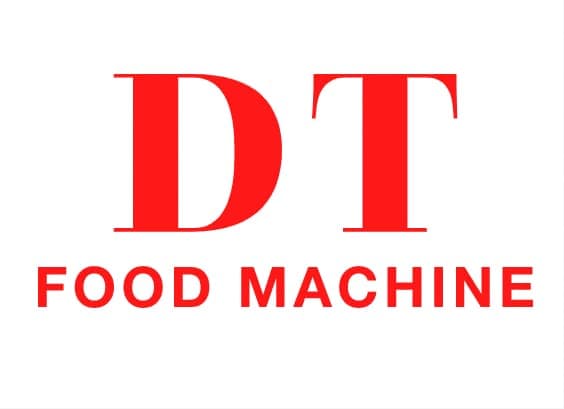Il burro di arachidi è diventato un punto fermo nelle famiglie e nelle industrie alimentari commerciali in tutto il mondo. Dai tavoli per la colazione agli scaffali da forno, Dai frullati agli snack bar, Il burro di arachidi è uno dei prodotti alimentari più versatili. Poiché la domanda globale di burro di arachidi continua a crescere, produttori di alimenti, imprenditori, e le cucine commerciali sono alla ricerca di soluzioni efficienti per soddisfare questa domanda. Questo è dove il macchina per la produzione di burro di arachidi commerciale gioca un ruolo vitale.
Spiegheremo la funzionalità, vantaggi, tecnologia, applicazioni, e il potenziale di mercato delle macchine commerciali per la produzione di burro di arachidi. Sia che tu stia progettando di creare una piccola unità di trasformazione alimentare o di espandere una linea di produzione su scala industriale, questo articolo ti aiuterà a capire perché investire in questa attrezzatura è una scelta intelligente.
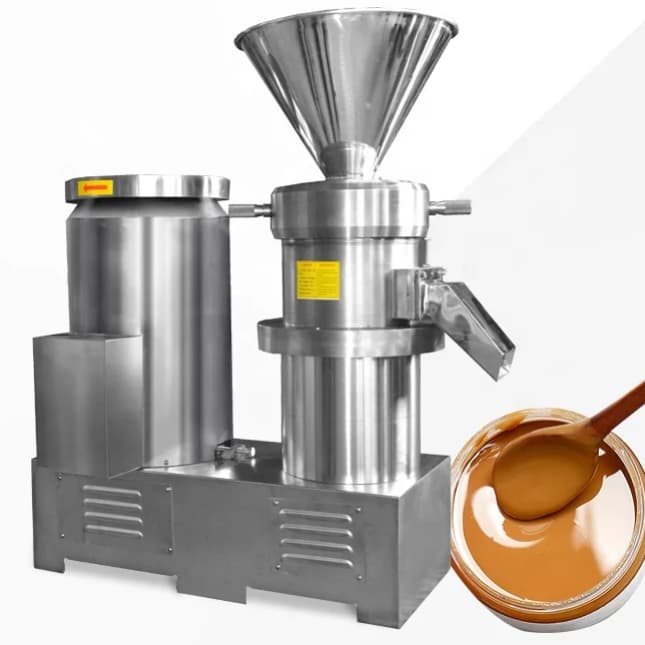
1. Che cos'è una macchina commerciale per la produzione di burro di arachidi?
Una macchina commerciale per la produzione di burro di arachidi è un'attrezzatura specializzata nella lavorazione degli alimenti progettata per macinare le arachidi tostate fino a renderle lisce, cremoso, o burro di arachidi grossolano. A differenza dei piccoli frullatori domestici o dei tritatutto manuali, per cui sono costruite queste macchine alta capacità, funzionamento continuo nelle fabbriche, ristoranti, e grandi cucine.
La macchina in genere funziona utilizzando tecnologia del mulino colloidale—due dischi abrasivi ruotano ad alta velocità, schiacciando le arachidi in particelle fini mantenendo i loro oli naturali. Questo processo non solo conferisce una consistenza morbida, ma preserva anche il ricco sapore e il valore nutrizionale delle arachidi.
Le caratteristiche principali includono:
- Costruzione resistente: Corpo in acciaio inossidabile per durata e igiene.
- Grande capacità produttiva: Intervalli da 50 kg/h per le piccole imprese oltre 1000 kg/h per gli stabilimenti industriali.
- Finezza regolabile: Gli operatori possono controllare la morbidezza o la consistenza del burro di arachidi.
- Funzionamento continuo: Progettato per funzionare per lunghe ore senza surriscaldarsi.
2. Perché la produzione di burro di arachidi è un settore in crescita
Prima di immergerci più a fondo nella macchina stessa, è importante comprendere il potenziale del mercato. Secondo i rapporti del settore, IL mercato globale del burro di arachidi si prevede che crescerà costantemente a causa della crescente preferenza dei consumatori per i prodotti salutari, ricco di proteine, alimenti di origine vegetale.
I driver di mercato includono:
- Consumatori attenti alla salute: Il burro di arachidi è una fonte naturale di proteine, grassi sani, e vitamine.
- Innovazione dello spuntino: Barrette energetiche, frullati, biscotti, e i prodotti da forno spesso utilizzano il burro di arachidi come ingrediente.
- Espansione globale: Una volta limitato agli Stati Uniti. ed Europa, il consumo di burro di arachidi sta crescendo rapidamente in Asia, il Medio Oriente, e l'America Latina.
- Domanda industriale: I produttori alimentari richiedono burro di arachidi sfuso per la trasformazione secondaria in salse, otturazioni, e si diffonde.
Questa crescente domanda crea opportunità redditizie per le aziende che investono in macchine commerciali per la produzione di burro di arachidi.
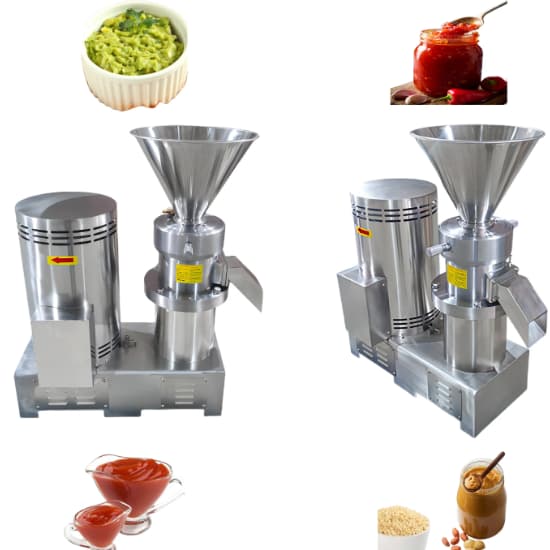
3. Componenti principali di una macchina commerciale per burro di arachidi
Per capire come funziona la macchina, diamo un'occhiata alle sue parti principali:
- Tramoggia di alimentazione – Dove vengono versate le arachidi tostate nella macchina.
- Mulino colloidale (Camera di macinazione) – Il cuore della macchina, composto da due dischi macinanti che frantumano le arachidi trasformandole in una pasta.
- Motore – Alimenta il meccanismo di macinazione; solitamente ad alta efficienza energetica con una lunga durata.
- Sistema di raffreddamento – Previene il surriscaldamento durante la produzione continua.
- Uscita di scarico – Rilascia il burro di arachidi finito nei contenitori di raccolta.
- Pannello di controllo – Consente agli operatori di regolare la finezza, velocità, e caratteristiche di sicurezza.
Possono includere anche macchine di fascia alta termoregolatori, sistemi di alimentazione automatica, E disegni sanitari per soddisfare gli standard internazionali di sicurezza alimentare.
4. Specifiche tecniche (Esempio)
Ecco un esempio di specifiche standard per una macchina per la produzione di burro di arachidi commerciale di medie dimensioni:
| Parametro | Specifica |
|---|---|
| Capacità | 200 - 500 kg/h |
| Alimentazione elettrica | 220V/380V, 50Hz/60Hz |
| Potenza motoria | 11 kW |
| Materiale | Acciaio inossidabile per alimenti (304/316) |
| Macinare finezza | 50–200 maglie regolabili |
| Sistema di raffreddamento | Circolazione dell'acqua |
| Peso | ~350 chilogrammi |
| Dimensioni | 980 × 450 × 1100 mm |
Nota: Queste specifiche variano in base al produttore e alle esigenze di produzione.
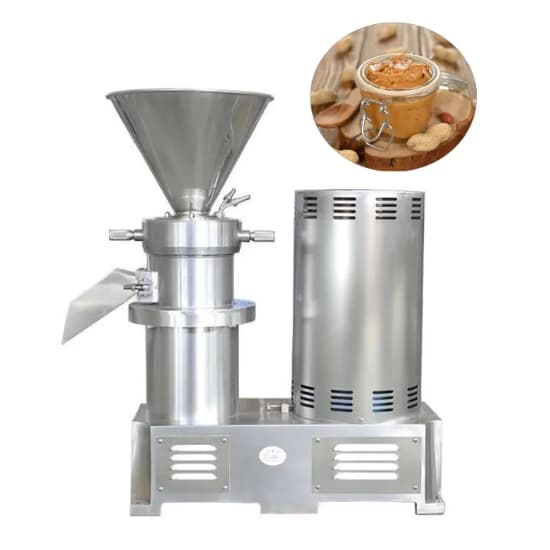
5. Tipi di macchine commerciali per burro di arachidi
A seconda delle esigenze di produzione, sono disponibili diversi tipi di macchine:
- Macchine per burro di arachidi su piccola scala
- Adatto per piccole imprese, ristoranti, o marchi locali di burro di arachidi.
- Capacità: 50–100kg/ora.
- Macchine per burro di arachidi di medie dimensioni
- Ideale per fornitori regionali o fabbriche in fase di avvio.
- Capacità: 200–500 kg/h.
- Macchine industriali di grandi dimensioni
- Progettato per la produzione di massa e l'integrazione in linee di produzione complete di burro di arachidi.
- Capacità: 1000+ kg/h.
- Linee automatiche di produzione di burro di arachidi
- Include tostatrice di arachidi, trasportatore di raffreddamento, macchina pelatrice, macina burro, serbatoio di miscelazione, e sistema di confezionamento.
- Ideale per aziende alimentari affermate che puntano alla grande distribuzione.
6. Vantaggi dell'utilizzo di una macchina commerciale per la produzione di burro di arachidi
6.1 Alta efficienza
Rispetto alla macinazione manuale, la macchina può produrre grandi volumi in una frazione del tempo.
6.2 Qualità costante
La macinatura regolabile garantisce morbidezza o granulometria uniforme, mantenimento della consistenza del prodotto.
6.3 Igiene e Sicurezza
La struttura in acciaio inossidabile per uso alimentare garantisce il rispetto delle normative sanitarie.
6.4 Efficacia in termini di costi
Sebbene l'investimento iniziale sia significativo, i risparmi sui costi a lungo termine derivano dalla riduzione della manodopera, sciupare, e tempi di inattività.
6.5 Versatilità
Oltre alle noccioline, la macchina può lavorare anche le mandorle, anacardi, semi di sesamo, semi di girasole, e anche peperoncino o concentrato di pomodoro.
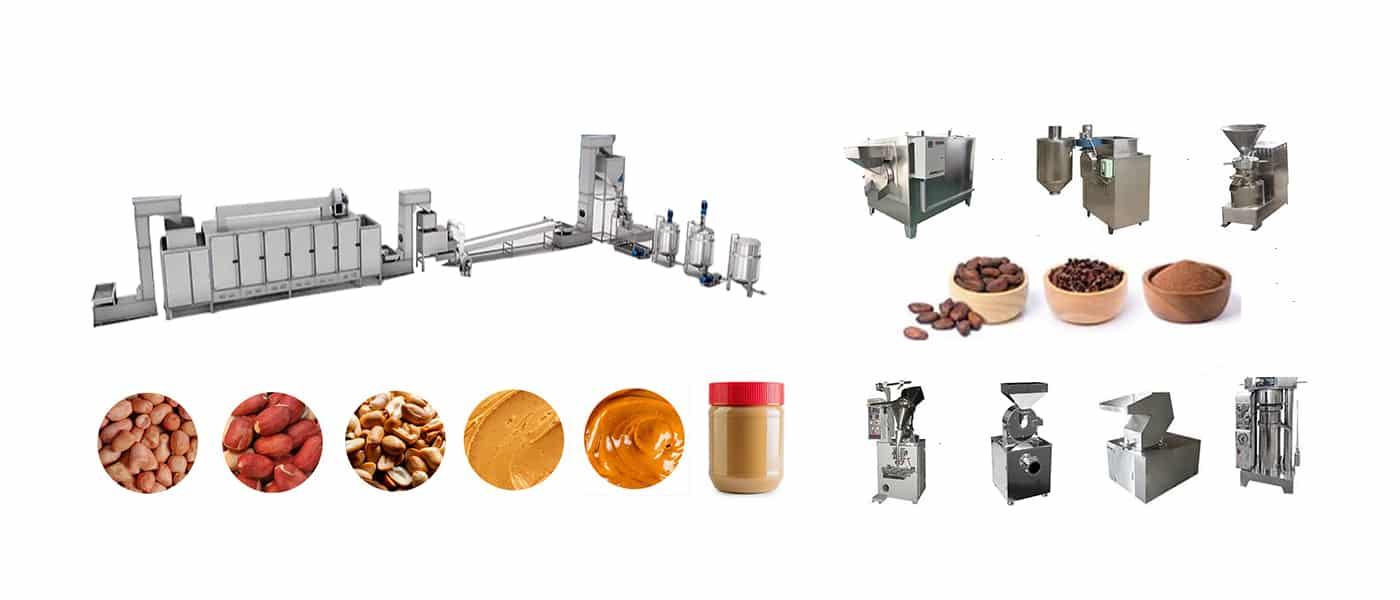
7. Come utilizzare una macchina commerciale per il burro di arachidi
Il funzionamento di queste macchine è semplice, ma una formazione adeguata garantisce efficienza e sicurezza.
Guida passo passo:
- Preparazione
- Tostare le arachidi in modo uniforme per migliorare il sapore e ridurre l'umidità.
- Rimuovere le pelli se necessario.
- Alimentazione
- Versare le arachidi nella tramoggia di alimentazione.
- Macinazione
- Avviare la macchina e regolare lo spazio di macinazione per la consistenza desiderata.
- Collezione
- Raccogli il burro di arachidi dall'uscita in contenitori puliti.
- Raffreddamento e stoccaggio
- Lasciare raffreddare il burro di arachidi prima di sigillarlo in barattoli o contenitori sfusi.
8. Manutenzione e pulizia
Come tutte le apparecchiature per la lavorazione degli alimenti, una corretta manutenzione garantisce la longevità.
- Pulizia giornaliera: Lavare la camera di macinazione e la tramoggia dopo ogni batch.
- Lubrificazione: Controllare e lubrificare periodicamente i cuscinetti del motore.
- Ispezione: Controllare regolarmente l'usura dei dischi abrasivi.
- Servizi igienico-sanitari: Utilizzare detergenti per alimenti per prevenire la contaminazione.

9. Fattori da considerare prima dell'acquisto
Quando si seleziona una macchina, tenere presenti i seguenti fattori:
- Capacità produttiva – Adatta la potenza della macchina alla tua scala aziendale.
- Qualità del materiale – Garantire l'acciaio inossidabile (304/316) per la durabilità.
- Requisiti di alimentazione – Verificare la tensione e l'efficienza energetica.
- Reputazione del marchio – Scegli produttori affidabili con supporto post-vendita.
- Bilancio – Equilibrio tra costi e ritorno sull’investimento a lungo termine.
- Flessibilità – Cerca macchine in grado di elaborare più tipi di dadi.
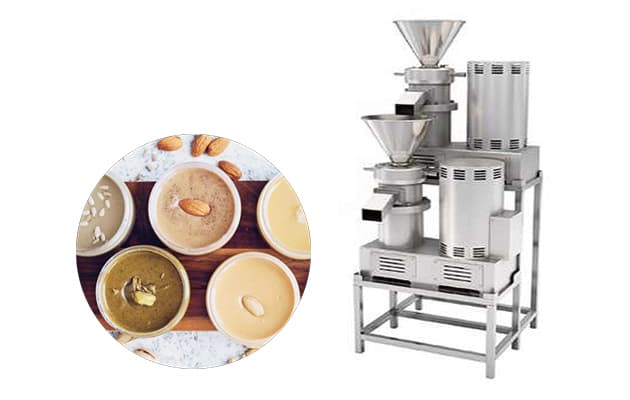
10. Applicazioni del burro di arachidi nell'industria alimentare
La produzione commerciale di burro di arachidi non si limita ai barattoli al dettaglio. Ha ampie applicazioni:
- Trasformazione alimentare: Farciture per biscotti, torte, e pasticcini.
- Industria delle bevande: Frullati, frullati proteici, bevande salutari.
- Confetteria: Barrette e caramelle al cioccolato e burro di arachidi.
- Salse & Condimenti: Salse e creme spalmabili a base di arachidi.
- Alimenti salutari: Barrette energetiche, integratori proteici, snack cheto.
Questa versatilità significa che la domanda di burro di arachidi, e quindi di macchine commerciali, continuerà ad aumentare.
11. Costo delle macchine commerciali per burro di arachidi
Il prezzo di queste macchine varia ampiamente a seconda della capacità, marca, e livello di automazione:
- Macchine di piccola taglia: $2,000 - $5,000
- Macchine di media grandezza: $6,000 - $15,000
- Linee industriali di grandi dimensioni: $20,000 - $100,000+
Mentre il costo è un fattore, gli acquirenti dovrebbero dare la priorità affidabilità, efficienza, e servizio post-vendita.
12. Il futuro della produzione di burro di arachidi
Tendenze che plasmano il settore:
- Automazione & Macchine intelligenti: Integrazione di AI e IoT per il monitoraggio della produzione.
- Prodotti orientati alla salute: Basso contenuto di zucchero, organico, e burro di arachidi fortificato.
- Macchine ecologiche: Design efficienti dal punto di vista energetico e imballaggi sostenibili.
- Espansione globale: Il burro di arachidi sta diventando popolare nelle regioni in cui non veniva tradizionalmente consumato.
13. Scegli noi come tuo partner commerciale
IL macchina per la produzione di burro di arachidi commerciale è più di un semplice pezzo di attrezzatura: è una via d'accesso alla crescita aziendale nel settore alimentare in forte espansione. Con la crescente domanda di prodotti a base di arachidi in tutto il mondo, investire in una macchina affidabile garantisce l’efficienza, qualità costante, e redditività.
Che tu sia un piccolo imprenditore o un produttore alimentare industriale, scegliere la macchina giusta su misura per le tue esigenze produttive può fare la differenza. Dalla tostatura delle arachidi alla produzione di liscio, burro cremoso pronto per il mercato, questa macchina è al centro di un'attività di successo nel settore del burro di arachidi.
